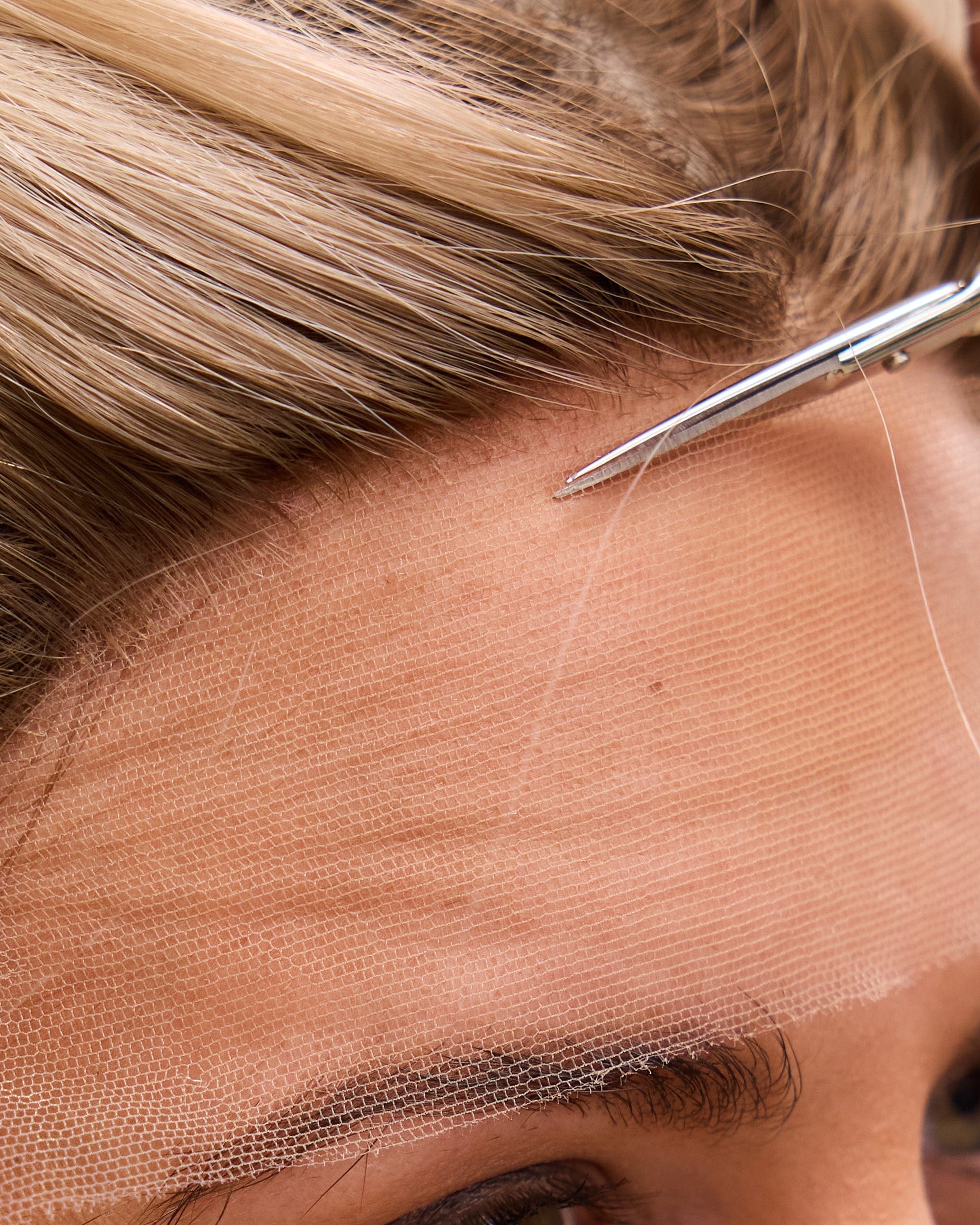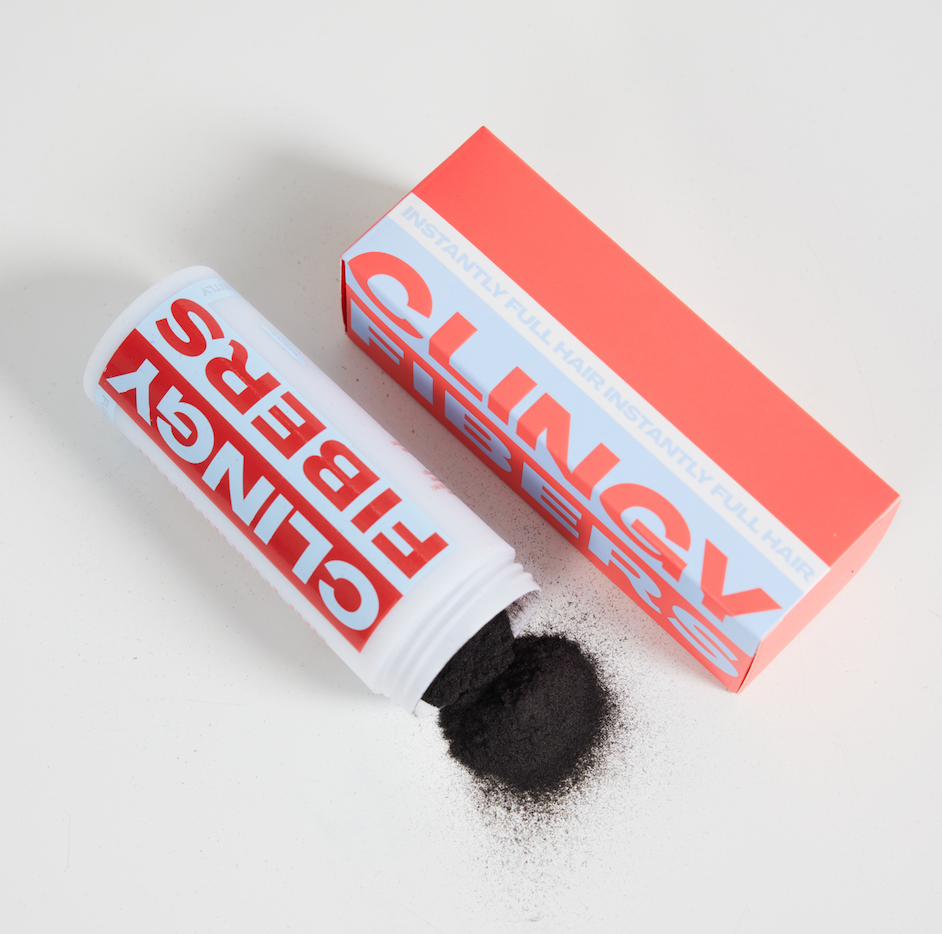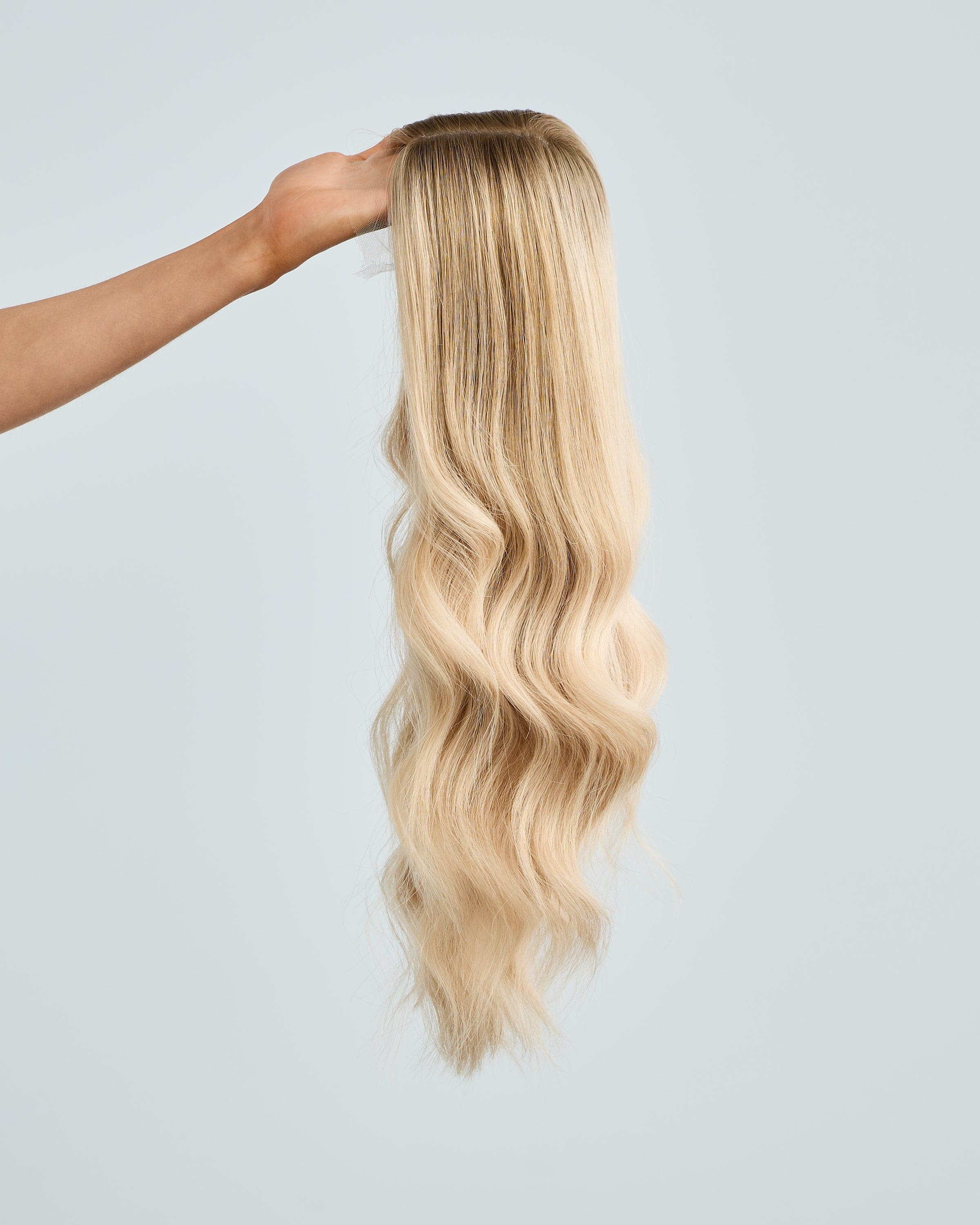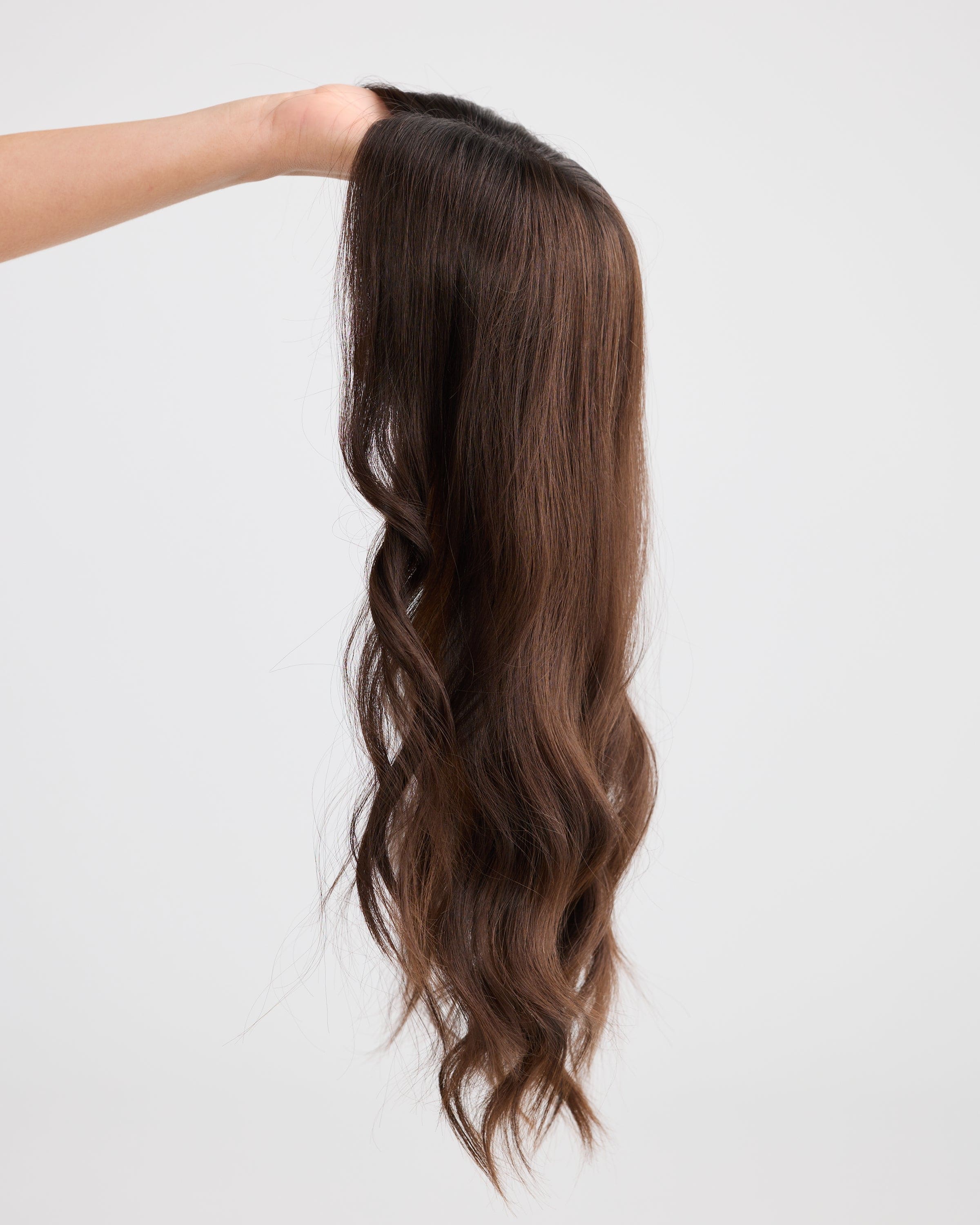Did you know there's more than one type of hair loss out there? A lot of people assume that 'alopecia' is the same for everyone. Maybe it's because of what we've seen in movies and TV shows. Alopecia is often associated with having hair loss EVERYWHERE. That means absolutely no hair on the head or anywhere on the body. And although yes, this is some people's experience of alopecia, it's not everyone's experience.
So, let's chat about the difference between Alopecia Areata and Androgenic Alopecia.
Long story short, Alopecia Areata is an autoimmune condition which causes patchy hair loss, whereas Androgenic Alopecia is diffused thinning all over the scalp. Whereas Alopecia Areata is an autoimmune condition, Androgenic Alopecia is caused by genetic or hormonal factors.
But let's dive a little deeper into the differences and similarities between Alopecia Areata and Androgenic Alopecia.
Alopecia Areata
What is Alopecia Areata?
Alopecia areata occurs when your immune system decides to attack your hair follicles...leading to hair loss. The jury's still out on why exactly this happens, but genetics and environmental factors (such as stress) may contribute.
When does Alopecia Areata using start?
Areata can happen at any age, however over half of Areata cases begin before 20 years old.
What can you expect with Alopecia Areata?
Areata usually starts quite suddenly, with circular patches of hair loss. However, areata is the queen of unpredictability. These patches may progressively widen, or stay the same for years. The patches might grow back and then fall out again. For some people, their hair will completely regrow back and they'll never experience another episode again. The patches of hair loss are usually completely smooth.
Some people also find that when they're expereince hair 'shedding' it feels tingly or itchy in the area.
Areata can also progress into other forms of alopecia, such as Alopecia Totalis (total loss of hair on the head, including brows and lashes) or Alopecia Universalis (total hair loss all over the body).
Is there a cure for Alopecia Areata?
Currently, there's no known cure for Alopecia Areata. However, there's lots of ways of dealing with Areata, including wigs!

Androgenic Alopecia
What is Androgenic Alopecia?
Androgenic Alopecia is usually a heredetiary condition which can be influenced by genetic and hormonal factors. People with Androgenic Alopecia are more sensitive to a specific hormone, dihydrotestosterone (DHT) which causes hair follicles to shrink. Eventually, this can lead to the follicles becoming 'inactive' and stop growing hair.
What age do people usually develop Androgenic Alopecia?
Like Alopecia Areata, Androgenic Alopecia can start at any age. However, for women, it most commonly begins after menopause. Many women in their 20's or 30's also experience Androgenic Alopecia.
What can you expect with Androgenic Alopecia?
In both men and women, androgenic alopecia causes gradually thinning hair on the scalp. In men, this thinning usually starts with a receding hair line and eventually reaches the crown of the head. For women, thinning can happen anywhere on the scalp
In women, androgenic alopecia usually causes thinning hair throughout the scalp, rather than specific bald patches.
Is there a known cure for Androgenic Alopecia?
There’s no known cure for Androgenic Alopecia. However, some people find certain treatments can slow down the progression of hair loss. Medications, such as minoxidil can sometimes halt more hair loss from occurring, but can’t regrow the hair which has been lost. Toppers and wigs are also fantastic options for Androgenic Alopecia.
How do you know if you have Alopecia Areata or Androgenic Alopecia (or something else...)?
It’s best to book an appointment with your GP or dermatologist. They’ll be able to run some tests to rule out any other causes (stress, thyroid levels, diet, etc.).
If you’re struggling with hair loss, we’re always here to chat x


















